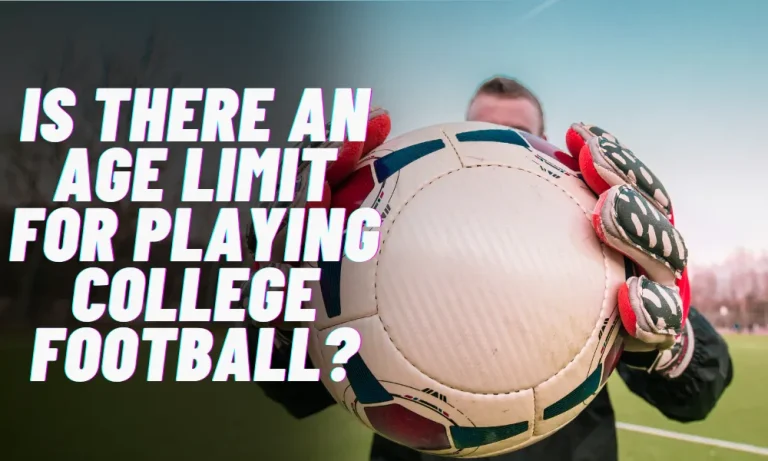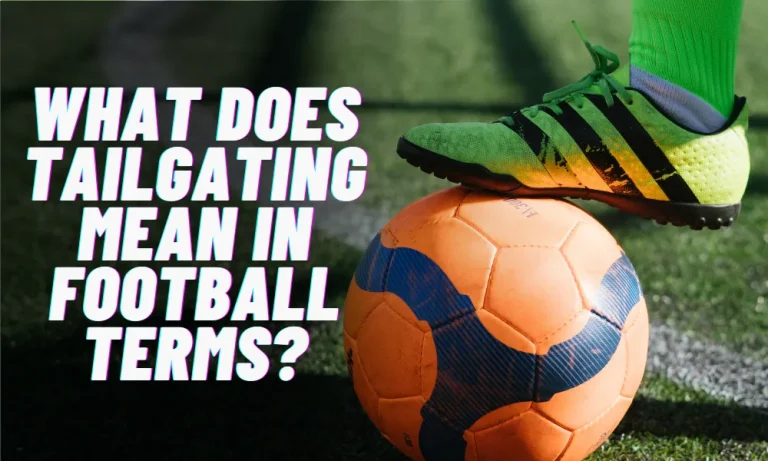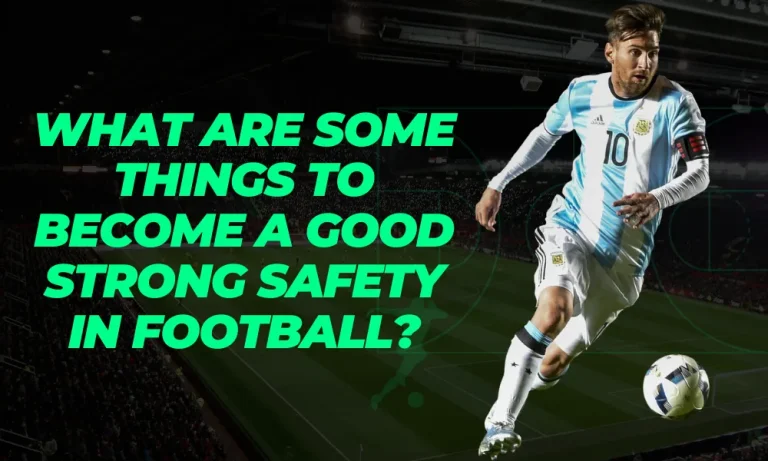Why Do Players Kneel When Someone Is Injured?
Have you ever wondered why players kneel when someone gets injured during a game? It’s a common sight in sports, but have you ever stopped to think about the reasons behind this gesture?
In this blog post, we’ll delve into the intriguing world of player behavior and uncover the meaning behind this act of empathy and support. So, let’s dive in and explore the fascinating phenomenon of why players kneel when someone is injured!
The History of Kneeling
Kneeling has a rich historical significance, serving as a universal gesture of respect and prayer across cultures and time.
In ancient times, individuals would kneel before kings and rulers as a display of submission and reverence. This act conveyed a deep respect for authority and a recognition of one’s place in the social hierarchy.
Over time, kneeling became associated with paying homage to higher powers, such as gods or deities, as a form of spiritual connection.
The connection between kneeling and showing empathy towards the injured is rooted in the understanding that physical vulnerability calls for compassion and support.
In various religious and cultural practices, kneeling has symbolized a willingness to offer aid and comfort to those in need.
Symbolism of Unity and Support
When players kneel during a game, it goes beyond a simple gesture – it represents a powerful symbol of unity and support for their injured teammate or opponent.
In moments of injury, players understand the physical and emotional toll it takes on the individual affected. By kneeling, they demonstrate their solidarity, showing that they stand together as a team, regardless of the jersey they wear.
This symbol of unity is a powerful reminder that the bonds formed on the field go beyond the game itself.
Famous incidents of players kneeling to show solidarity have left an indelible mark on sports history. One such example is when football players knelt during a match to honor a rival player who suffered a career-ending injury.
This act of support transcended competition, showcasing the deep respect and empathy players have for one another.
In another instance, basketball players from opposing teams knelt together after a player sustained a severe injury.
This act of solidarity sent a powerful message to fans and the world, reinforcing the idea that sportsmanship and compassion should always prevail, even in the face of fierce competition.
These incidents highlight the true essence of sports – the understanding that at the core, players are human beings who care for each other’s well-being. Kneeling serves as a visual representation of this empathy, reminding us that while winning is important, the welfare of fellow athletes should never be compromised.
Psychological and Emotional Reasons
Witnessing an injury during a game can have a profound psychological impact on players. The sight of a teammate or opponent in pain can evoke a range of emotions, including fear, sadness, and even guilt.
When players see someone get injured, it triggers a natural empathetic response. They can imagine themselves in the same situation, experiencing pain and uncertainty.
This emotional connection can be overwhelming and distracting, potentially affecting their performance on the field.
Kneeling serves as a coping mechanism for players in such moments. By taking a knee, they create a physical and mental space to process their emotions and regain composure.
It allows them to acknowledge the impact of the injury while simultaneously channeling their energy back into the game.
Moreover, kneeling also demonstrates a collective response from the team. It sends a message of support and reassurance to the injured player, helping them feel cared for and connected to their teammates.
This support system plays a crucial role in alleviating the emotional burden and promoting a sense of belonging within the team.
Cultural and Social Factors
The act of kneeling during an injury is influenced by various cultural and social norms. Different societies have their own perspectives on showing support and empathy in sports.
Cultural norms play a significant role in determining how individuals express support during difficult moments. In some cultures, kneeling is seen as a sign of respect and humility, often associated with religious or ceremonial practices.
When players from these backgrounds kneel during an injury, it reflects their deep reverence for the injured individual and their commitment to honoring their pain.
On the other hand, social factors also come into play. In some sports, there may be unwritten rules or traditions that dictate how players should respond to injuries.
These norms can vary widely across different sports and even within different leagues or teams. For example, in certain sports, a quiet moment of silence may be observed, while in others, players may gather around the injured person to offer words of encouragement.
Cultural perspectives on showing support and empathy in sports also differ. Some cultures emphasize individual achievement and competition, where the focus is primarily on winning.
In these contexts, the act of kneeling may be less common, as the emphasis is on maintaining a competitive mindset.
Conversely, in cultures that prioritize collectivism and teamwork, kneeling during an injury may be more prevalent.
These societies value unity, compassion, and the well-being of the group as a whole. Kneeling becomes a visible symbol of solidarity, reinforcing the idea that the team’s success is intertwined with the welfare of each individual.
Role of Sportsmanship and Fair Play
Sportsmanship and fair play play a crucial role in the act of kneeling during an injury. This gesture goes beyond the physical act of showing support and empathy, encompassing the values and principles that uphold a positive sports environment.
Sportsmanship is all about displaying respect, integrity, and ethical behavior on and off the field. When players kneel during an injury, it exemplifies their commitment to these values.
It demonstrates empathy and compassion towards a fellow athlete, transcending the competitive nature of the game. This act of sportsmanship creates a sense of unity and camaraderie among players, fostering a positive environment where mutual support and respect prevail.
Fair play, another important aspect of sportsmanship, emphasizes the importance of playing by the rules and treating opponents with respect.
Kneeling during an injury embodies fair play by acknowledging that the well-being of the players should always take precedence over the competition. It shows that even in the heat of the game, players can put aside their differences and come together in a shared moment of empathy.
Media and Public Perception
The media and public perception of players kneeling during an injury can have a significant impact on the overall game experience.
The media plays a crucial role in shaping public opinion and influencing how players’ actions are interpreted. When players kneel during an injury, the media often highlights this act as a sign of sportsmanship, empathy, and solidarity.
They emphasize the compassionate aspect of the gesture, portraying it as a powerful display of support for a teammate or opponent in need. This positive portrayal can enhance the overall game experience, fostering a sense of unity and goodwill among viewers.
However, public perception can vary, as different individuals may interpret the act of kneeling differently.
Some people may view it as a genuine display of empathy and respect, applauding the players for their compassion. They see it as a reminder that sports are not just about competition but also about humanity and camaraderie.
On the other hand, there may be negative reactions from individuals who perceive kneeling during an injury as a sign of weakness or attention-seeking behavior.
They may argue that players should focus on the game and not engage in what they perceive as unnecessary displays of emotion. These negative viewpoints can detract from the game experience and create unnecessary controversy.
Evolution of the Gesture
The act of kneeling during an injury has evolved significantly over time, reflecting the changing dynamics and values within the world of sports.
In the past, the act of kneeling during an injury was less common and often seen as a sign of weakness or vulnerability.
Players were expected to tough it out and continue playing, even if they were in pain. The focus was primarily on the competition and winning, with less emphasis on empathy and sportsmanship.
However, as societal values and attitudes shifted, so did the perception of players kneeling during an injury. It began to be seen as a display of compassion and respect for a fellow athlete’s well-being.
The gesture evolved to symbolize unity and support within the sports community.
In recent years, the act of kneeling during an injury has become more prevalent and widely accepted. It is now considered a norm in many sports, and players are encouraged to show their support for an injured teammate or opponent.
This evolution reflects a greater emphasis on empathy and sportsmanship in today’s sporting culture.
FAQs – Why Do Players Kneel When Someone Is Injured
1. Why do players kneel when someone is injured?
Players kneel when someone is injured as a show of empathy and respect. It is a way to demonstrate support and solidarity with the injured player, highlighting the importance of compassion and sportsmanship in the game.
2. Does kneeling during an injury serve any practical purpose?
Kneeling during an injury does not serve a direct practical purpose in terms of physical aid to the injured player. However, it creates a supportive and empathetic environment, fostering a sense of unity and compassion among teammates and opponents.
3. How does kneeling during an injury impact the overall game experience?
Kneeling during an injury can have a positive impact on the overall game experience. It enhances the sportsmanship aspect of the game, reminding players and viewers alike that sports are not just about winning, but also about caring for one another and showing respect.
4. Are there any historical reasons behind the act of players kneeling during an injury?
The act of players kneeling during an injury has evolved over time. In the past, it was less common and often seen as a sign of weakness. However, as societal values changed, the gesture began to symbolize compassion and support, reflecting a shift towards a more empathetic sports culture.
5. Does the media play a role in shaping the perception of players kneeling during an injury?
Yes, the media plays a crucial role in shaping the perception of players kneeling during an injury. Media coverage can influence public opinion and interpretation of the gesture, highlighting its compassionate nature or generating controversy depending on how it is portrayed.
Conclusion
In conclusion, players kneel when someone is injured as a powerful display of empathy and respect. It symbolizes unity and support within the sports community, reminding us that sports are not just about competition but also about humanity and camaraderie.
Kneeling serves as a visual representation of compassion, fostering a positive and inclusive sports culture.



